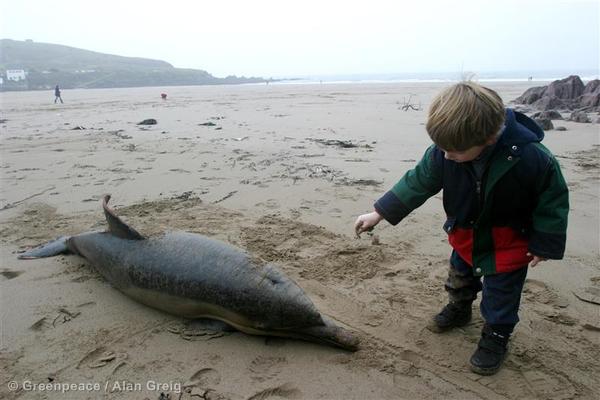Stenella coeruleoalba
Interactions
Throughout history media has popularized dolphins as friendly animals
that enjoy human interactions. However people may fail to realize the
impact that humans have on dolphins. The Striped Dolphin has been hunted
and killed in the western Pacific by the Japanese since the early
1940’s. Currently conservationists are worried about the survival of the
Mediterranean Striped Dolphins due to several factors such as pollution,
disease, and fishing nets. It was estimated that, until the protection
of these dolphins by the Marine Mammal Protection Act of 1972, 21,000
were caught and killed each year (Hammond, 2008). It is believed that
there are few Striped Dolphins in the costal areas due to this hunting.
The Japanese government set a quota as to how many dolphins can be
caught each year; 685 is the limit for the Striped Dolphin (National
Research Institute of Far Seas Fisheries). This relationship is not only
dangerous for the dolphin, but can also be perilous for humans.

It was recently discovered that dolphin meat contained very high levels of mercury, cadmium, DDT, and other organic pollutants (Marine Connection). Experiments have found that people who frequently eat this meat have a high risk of mercury poisoning or other health problems (National Research Institute of Far Seas Fisheries). Recently in the 1990’s around 1,000 Striped Dolphins died due to a deadly bacteria caused by pollution, morbillivirus epizootic.
There have also been sightings of mix-species groups of dolphins in the Gulf of Corinth. These groups, ranging from 10-35 members, are composed of Stenella coeruleoalba, Delphinus delphis, and Grampus griseus. These dolphins were observed participating in certain behaviors that could be considered either playful or aggressive. Synchronized swimming and surfacing was also seen between these mixed-species groups (Frantzis 2002).
To continue learning about the Striped Dolphin, visit the Facts page or go back to the Home page.